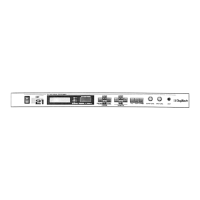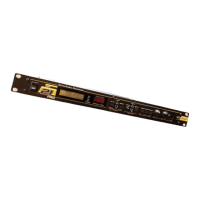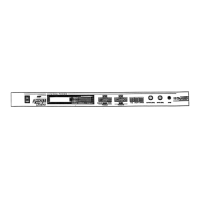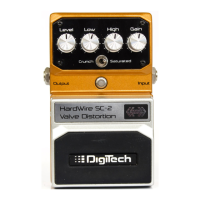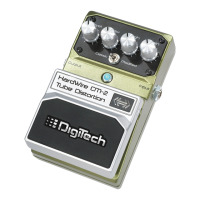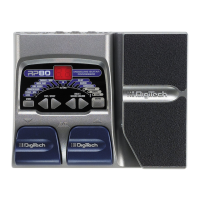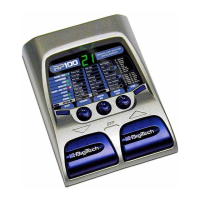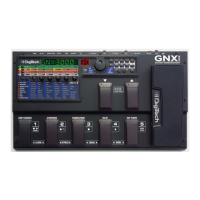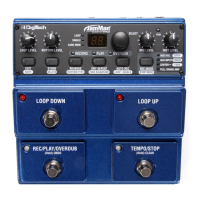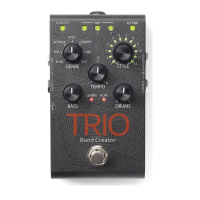39
bling, octave division, and chromatic harmonies. Each Pitch Shifter has a 4-octave range,
stepped in semitones from -24 to +24.
Dtn A - B Controls the detuning amount for pitch-shifted voices A and B.As DTN moves away from
zero, dissonance becomes more pronounced. Low DTN settings can be useful for thickening
or enhancing the imaging of the source material. Ranges from -50% to 50%.
Shft C - D See Shift A - B.
Dtn C - D See Dtn A - B.
Shft E - H See Shift A - B.
Dtn E - H See Dtn A - B.
Key Sets the diatonic key for the harmonies. If the song you are playing is in the key of G Major,
you would select G for the scale.
Scale Sets the scale type for the Harmony you want to hear. Scale types include: Major, Minor,
Harmonic Minor, Melodic Minor. Dorian, Mixolydian, Lydian, Lydian Augmented, Major
Pentatonic, Minor Pentatonic, Blues,Whole Tone, Half-Whole,and Whole-Half.
Interval Sets the basic interval of the Harmony.You can choose from one of several Harmony inter-
vals. See the Harmony Interval Charts for reference.
Out A - B Adjusts the overall level of pitch-shifted voice A or B. Ranges from Off to 100%.
Pan A - B Controls the placement of pitch-shifted voice A or B in the stereo image. Ranges from -99
(all left) to 99 (all right).
Out C - D Adjusts the overall level of pitch-shifted voice C or D. Ranges from Off to 100%.
Pan C - D Controls the placement of pitch-shifted voice C or D in the stereo image. Ranges from -99
(all left) to 99 (all right).
Out E - H Adjusts the overall level of pitch-shifted voice E through H. Ranges from Off to 100%.
Pan E - H Controls the placement of pitch-shifted voice E through H in the stereo image. Ranges from
-99 (all left) to 99 (all right).
Out L - R Adjusts the left or right output level of the pitch-shifted voice. Ranges from Off to 100%.
Out LA - LA Adjusts the left-side level of pitch-shifted voice A or B. Ranges from Off to 100%.
Out RA - RB Adjusts the right-side level of pitch-shifted voice A or B. Ranges from Off to 100%.
Spread Controls the width of the effect’s stereo imaging.The higher the setting, the wider the image
The lower the setting, the more monophonic the effect becomes. Ranges from 1 to 10.
DETUNERS
The detuner effect does exactly what its name implies; it detunes a sound (moves it out of tune) and allows you to
add it to the original sound.The result can be almost chorus-like, but it doesn't move like the chorus effect does.This
actually makes the detuner more transparent and not quite as thick as the chorus effect, which in many applications is
a good thing (since effects can quickly pile up and clog up great sounding audio).
WHEN DO I USE A DETUNER? The detuner falls into the same guidelines as the chorus effect. It works with
just about everything; It is ideal for thickening up a rhythm guitar track.
Remember to experiment with the delay parameters if you are looking for a wider detuning sound.Adding 30-60
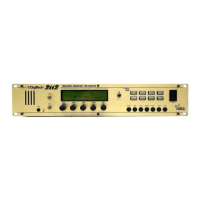
